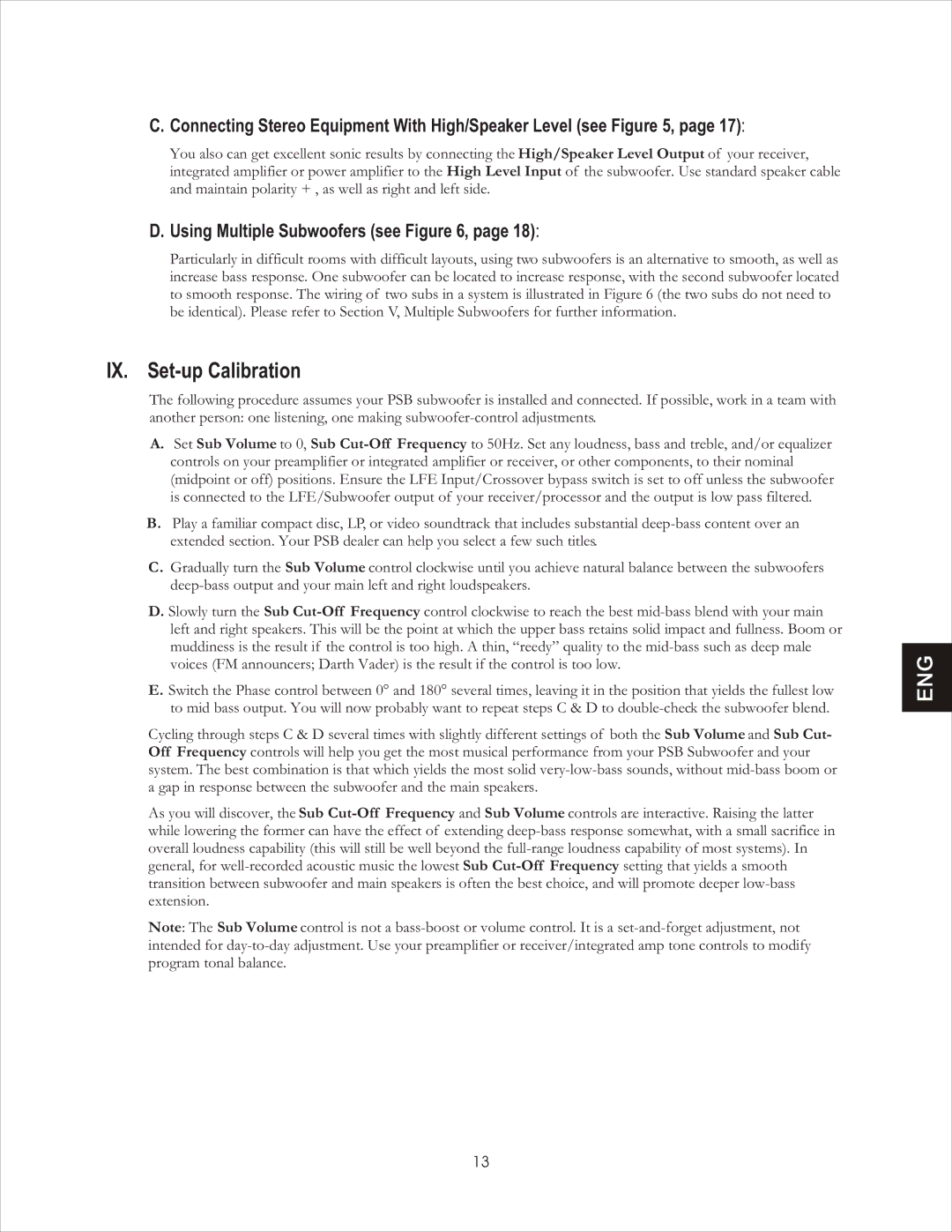C. Connecting Stereo Equipment With High/Speaker Level (see Figure 5, page 17):
You also can get excellent sonic results by connecting the High/Speaker Level Output of your receiver, integrated amplifier or power amplifier to the High Level Input of the subwoofer. Use standard speaker cable and maintain polarity + , as well as right and left side.
D. Using Multiple Subwoofers (see Figure 6, page 18):
Particularly in difficult rooms with difficult layouts, using two subwoofers is an alternative to smooth, as well as increase bass response. One subwoofer can be located to increase response, with the second subwoofer located to smooth response. The wiring of two subs in a system is illustrated in Figure 6 (the two subs do not need to be identical). Please refer to Section V, Multiple Subwoofers for further information.
IX. Set-up Calibration
The following procedure assumes your PSB subwoofer is installed and connected. If possible, work in a team with another person: one listening, one making
A.Set Sub Volume to 0, Sub
B.Play a familiar compact disc, LP, or video soundtrack that includes substantial
C.Gradually turn the Sub Volume control clockwise until you achieve natural balance between the subwoofers
D.Slowly turn the Sub
E.Switch the Phase control between 0° and 180° several times, leaving it in the position that yields the fullest low to mid bass output. You will now probably want to repeat steps C & D to
Cycling through steps C & D several times with slightly different settings of both the Sub Volume and Sub Cut- Off Frequency controls will help you get the most musical performance from your PSB Subwoofer and your system. The best combination is that which yields the most solid
As you will discover, the Sub
Note: The Sub Volume control is not a
program tonal balance.
ENG
13
